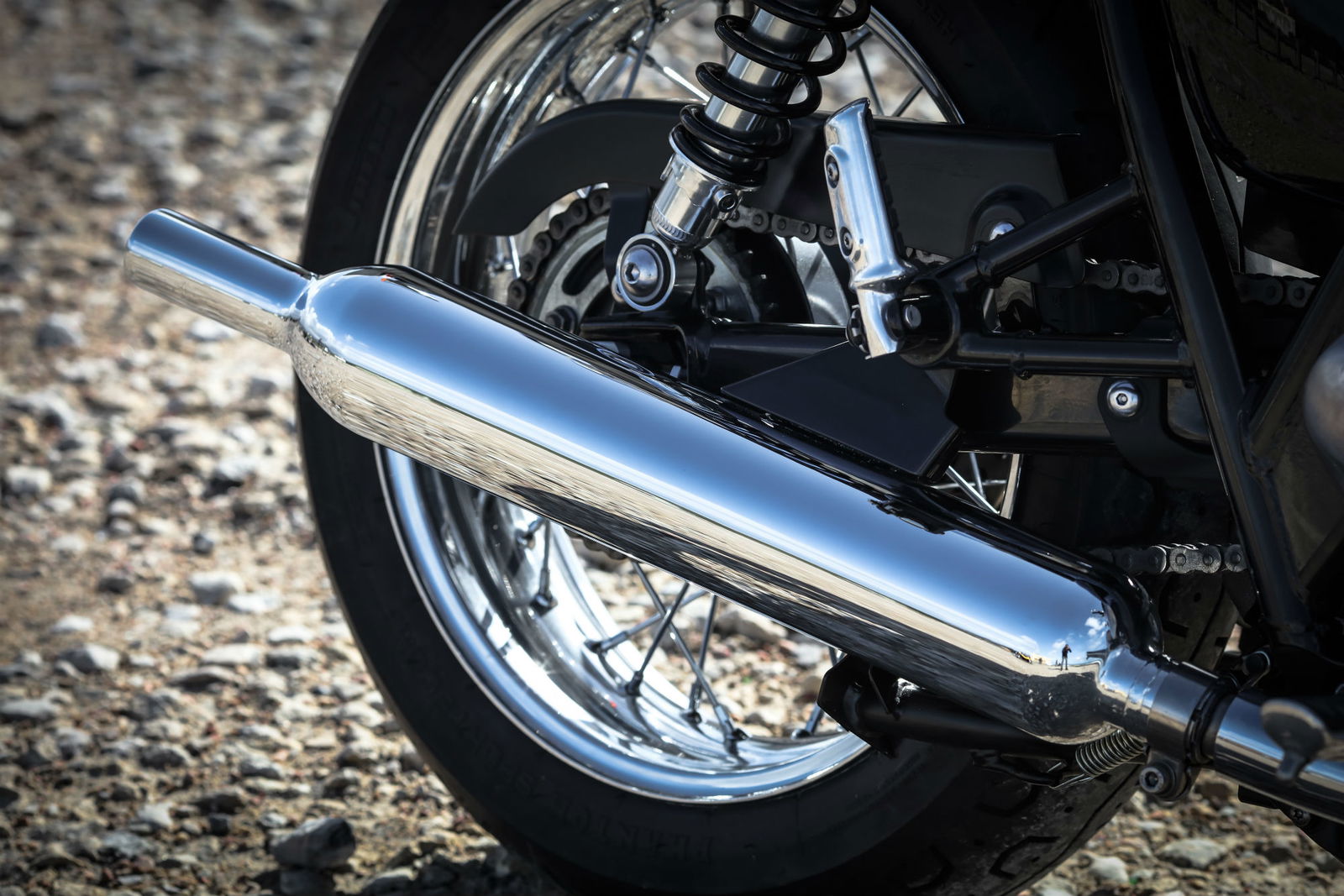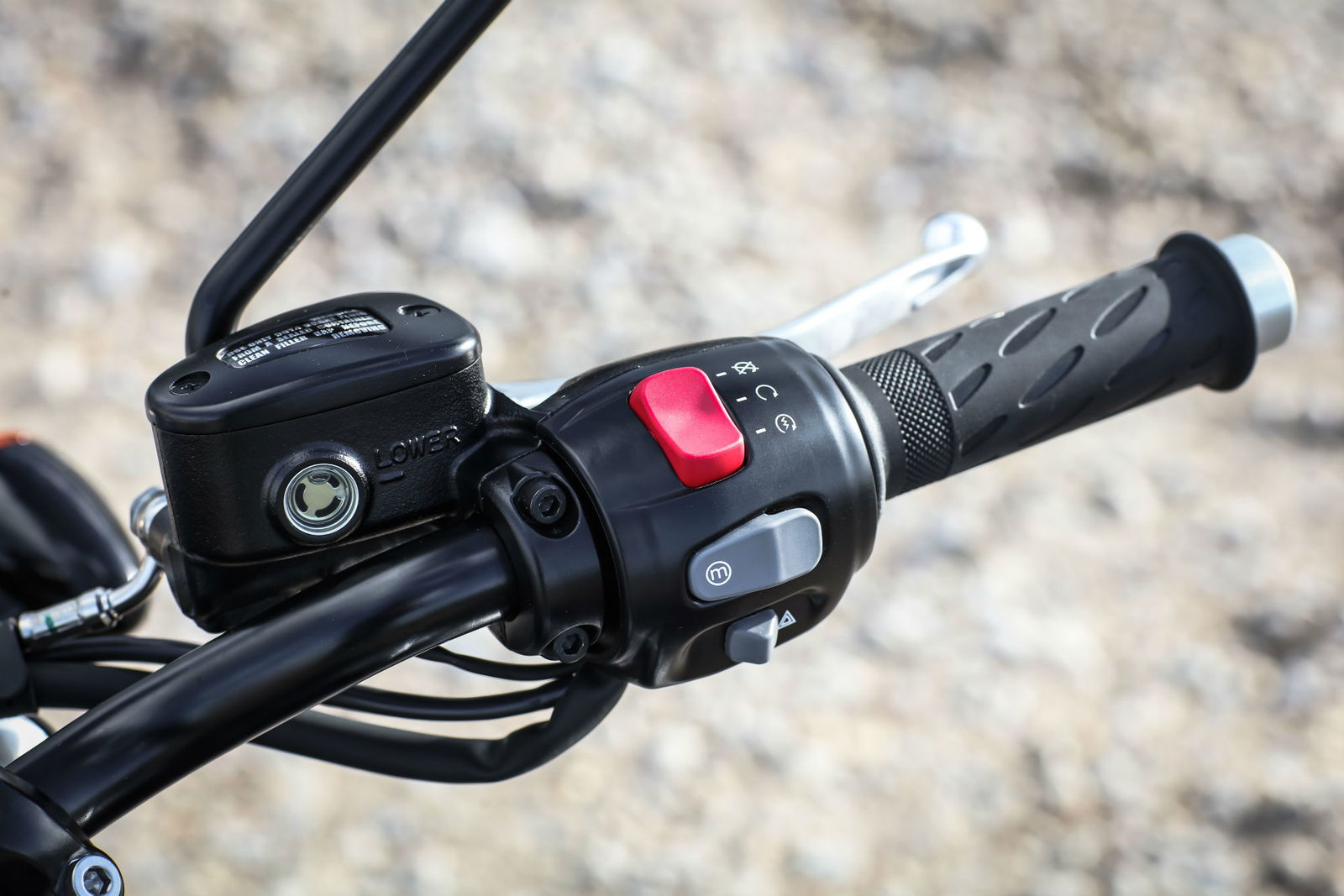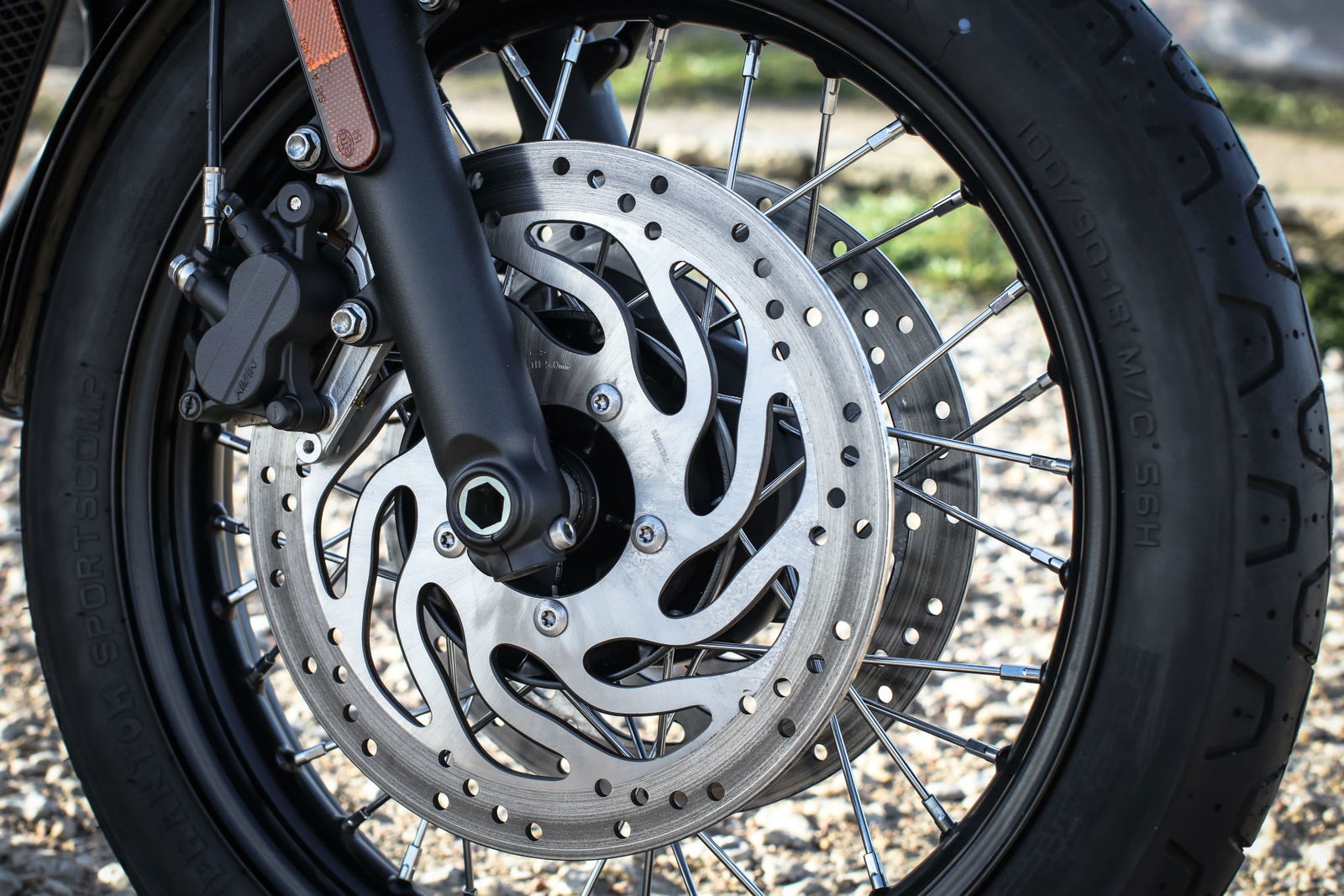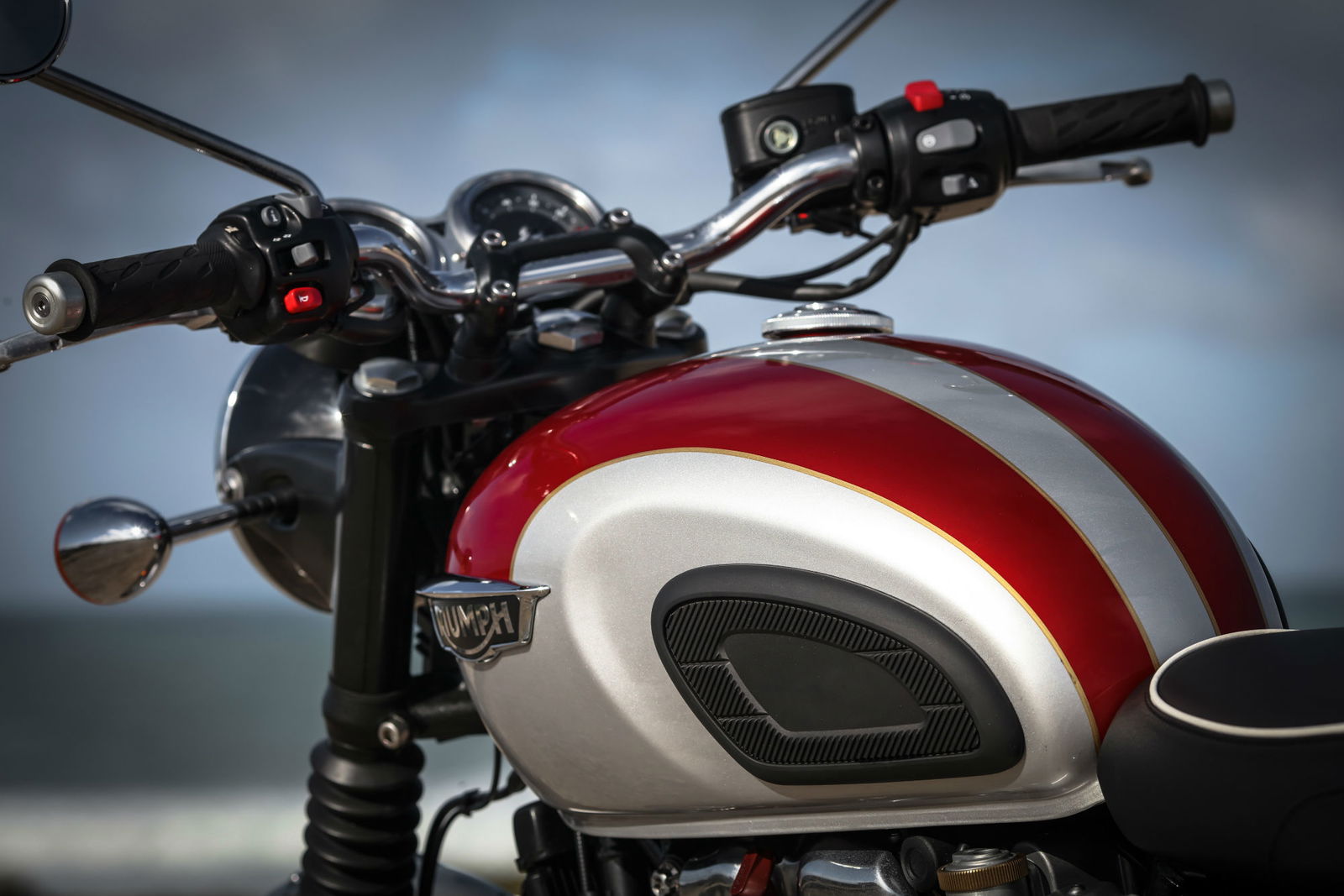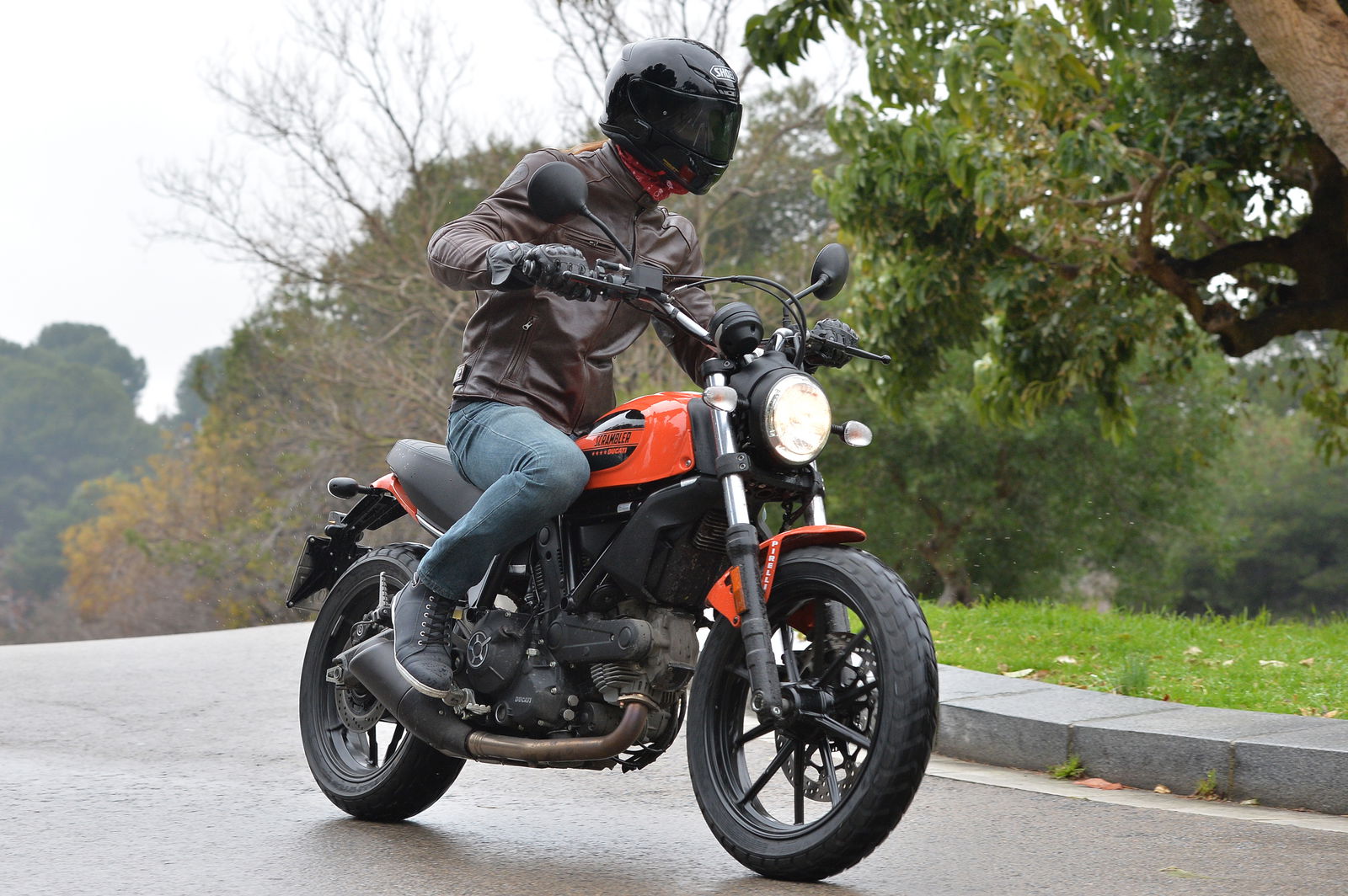Bonneville T120 review
The Bonneville T120 is exactly what it needed to be – a true Bonneville, and nothing less.

The Bonneville T120 builds on the brand's impeccable design credentials, but how does the performance compare to other modern bikes?

Bonneville T120: Design
'Icon' is an over-used word, Triumph said at the launch of the T120 Bonneville, before using it to describe the bike we were about to ride. It's okay, because this one really was an icon, they said.
It is over-used, and not a very satisfactory description for any motorcycle, but I take the point. It’s not anything to do with the Bonneville Salt Flats, as they predictably tried to persuade journalists. It’s just that, as traditional bikes go, what has more credibility and authenticity than a machine that still looks so much like it did in 1959? The Bonneville looked this way before traditional was even traditional. A new wave of modern-classic machines has grown around it, but it was the same back when that look was just modern. Retro bike? It invented retro bikes. Got a beard and turn-ups? It invented you.
That’s probably going a bit far but it’s true to say that the Triumph Bonneville was here before anyone put a barbershop and tattooist at a bike show, with the most recent stretch of continuous production dating back to 2001.
Without no big updates for several years, the Bonneville had somehow found itself in danger of getting left behind by its own scene. Hence a whole new Bonneville range for 2016, with liquid-cooled engines.
With this one – the T120 - Triumph has aimed specifically to preserve the look of the original 1959 model of the same name. So the parallel-twin engine retains a similar shape in profile, leaving big enough gaps through the frame to stick a hand in.
The throttle bodies look like carburettors. The cylinders have machined fins that aid cooling efficiency according to Triumph, so the radiator can be smaller, tucked behind the front wheel like a shadow, with barely a hose in sight.
The brushed aluminium engine cases have inspection covers, which are real. And it’s covered in chrome, unless you go for the T120 Black, which has matt black everywhere instead. That's the one I rode, with 'Matt Graphite' bodywork.
Bonneville T120: Engine
The exhaust has two skins, so from the side it looks like a simple peashooter, while a hidden section diverts through a catalytic converter.
It’s not a bad job.

It goes on sale this year alongside the new Thruxton, Thruxton R and Street Twin. Like the Thruxton and Thruxton R, it's 1200cc, where the entry-level Street Twin is a 900.
Unlike the Thruxtons, which have the 'high power' variant of the 1200 engine, the T120 has the 'high torque' version. It still makes less peak torque, with 77.4lbft instead of 82.6, but it makes it quite a lot lower in the range, right down at 3,100rpm compared to 4,950.
Peak power is 80hp at 6,550rpm compared to the Thruxton's 97hp at 6,750. Both machines red-line at 7,000rpm.
So what you in fact get is not so much high torque as a big wallop of it as soon as you open the throttle, snapping the bike suddenly forward like it's been hit from behind by a truck.
With so much low down, there isn't really a pressing need to push to the red line. I found the engine most likeable at about 5,000rpm, where it's getting nearer peak power but still feels completely unstressed, eager and effortless, and capable of good progress.
I’m not an expert on 1959 Bonnevilles but I’m going to go out on a limb and say they didn’t have a button on the left-hand handlebar with an ‘i’ on it, nor one on the right with an ‘m’. The ‘i’ button is to select what information you want to see on the digital insert in the twin-dial dash. It includes current and average fuel consumption, range to empty and a gear indicator.
The ‘m’ button indicates the presence of a very un-1959-ish electronics package. The new Bonneville T120 has ABS as standard (of course) along with traction control, which can be switched off, and two riding modes, Road and Rain. With peak torque so low in the range, traction control is probably a good idea, likely to save a few people from a moment of clumsiness exiting a damp corner. According to Triumph it’s to ‘optimise the class-leading torque’ which is another way of saying the same thing.
Rain mode will be helpful for the same reason. It offers the same peak power but delivers less torque in response to a given throttle input. The T120 doesn’t by any means have an aggressive throttle response in Road - the drive comes in smoothly as you roll on – but the torque is always ready, so there’s no harm in a mode that tolerates a less precise wrist movement. Switching modes is a simple business of pressing that button. If you’re rolling, you have to close the throttle and pull in the clutch to finalise the choice. You also have to pull in the clutch to start the T120, even in neutral.
There’s a third button I will gamble wasn’t on a 1959 model, for the latest version’s heated grips, located on the collar of the left-hand grip itself. They’re standard equipment on the new T120, as they clearly should be on all bikes, and they’re pretty good. There’s only two levels but that’s all you need. The launch ride in Portugal was cold enough for a jumper and thermal lining under my leather jacket. I was in summer gloves and found level two too hot, but enjoyed the rest of the ride on level one.

Bonneville T120: Suspension and Handling
Triumph describes the suspension as 'developed for an engaging yet easy-going riding experience'. It's softish, a little bouncy - authentically traditional, you might say - but certainly comfortable. Riding straight through potholes or over speed humps is not an inconvenience. It’s got slightly more travel than the outgoing model. The seat is also generously padded, soft and comfortable. Triumph says it’s got more foam than the outgoing one, while seat height remains ‘comparable’, at 785mm.
The riding position is such that the seat feels low and the bars high. Not ape-hanger high, obviously, but enough for your forearms to be near horizontal. For mine to be, anyway. It’s relaxed and comfortable, with the pegs a little forward of the seat.
While other manufacturers have long since switched to giving us wet weight figures instead of dry, Triumph still sticks with the latter. With this bike’s claimed 224kg, you can see why they’d be keen to use any means available to diminish the impression of weight.
It really doesn’t feel as heavy as that figure suggests. It’s got a low centre of gravity, revealed by the ease with which you can lean it over a bit at standstill, and push it from side to side letting it rest on one thigh and then the other.
By the same token, it leans and turns with the ease of a lighter bike on the move, too. Asked to guess, I might have said it weighs about 30kg less than it does.
It’s got the same tubular steel main frame as the Thruxton and Thruxton R, but with a different welded-on sub-frame and an utterly different feel. The high bars and 18-inch front wheel don’t put you in touch with the front tyre and tarmac in the same way the Thruxton R’s 17-inch and clip-ons do.
The brakes, twin front discs and two-piston Nissin calipers at both ends, are more than competent, with good, progressive power through the span-adjustable lever.
The Pirelli Phantom Sportscomp tyres seemed good in the dry. They perhaps weren’t quite so confidence-inspiring in the wet, but they kept all the shiny chrome the right way up.

Should I buy the Bonneville T120?
There are a few inimitable touches that make the Bonneville T120 a nice experience – the shiny bits, the beautiful engine, the rubber grips on the sides of the tank – the genuine period feel.
Above all, it manages to put you in a good mood. Look at the clocks, with the chrome rims. The ‘Triumph’ embossed handlebar clamp. Have a bit of that easy torque. If you’re like me, you’ll keep accelerating and decelerating just to feel it again. Hear the engine – not loud, but loud enough to believe it’s air-cooled. Warm your hands on the heated grips. And now tell me you’re still in a bad mood.
The T120 isn’t a traditional-looking bike given some modern performance, like the BMW R nineT and now the Triumph Thruxton R. It’s a faithful recreation of a classic motorcycle, or as near as can be got to it, using modern technology.
There’s the odd thing that seems to undermine the impression more than strictly necessary. As on the Thruxton R, I wonder if the handlebar switch-gear couldn’t look a little more from 1959, instead of straight from 2016.
But overall it seems to recreate the things about an old bike that I imagine made them good, while taking bad bits out and adding some mod cons and safety. There’s a torque-assist clutch, so your wrist doesn’t seize up from pulling the span-adjustable lever. It’s got 10,000-mile service intervals, increased from 6,000. It's got a sixth gear (which there was hardly a chance to use on the morning test ride on twisty roads, and which seemed quite tall).
The ignition lock has been moved to the right place, between the handlebar and clocks. It’s got LED lights. It’s even got a USB charging socket. Try telling that to a classic bike enthusiast. He’ll say ‘It’s got a you and me what pocket?’
It’s got a centre-stand, which is handy in any era.
Starting from £9,600, it’s a lot more expensive than Ducati’s popular 800cc Scrambler, which starts from £7,250. That could be a problem for it but I don’t think so. People who want a Bonneville will want a Bonneville, not a foray into the Land of Joy.
That’s what the T120 has got right. It’s not an icon. It’s a Bonneville - just what it needed to be.
- Model tested: Triumph T120 Bonneville
- Price: from £9,600
- Engine: 1200cc liquid- cooled eight-valve SOHC parallel-twin
- Power: 80hp @ 6,550rpm
- Torque: 77.4lbft @ 3,100rpm
- Dry weight: 224kg
- Frame: tubular steel cradle
- Suspension: Kayaba 41mm cartridge forks, 120mm travel; Kayaba twin shocks with adjustable pre-load, 120mm rear wheel travel
- Brakes: twin 310mm front discs with Nissin two-piston floating calipers, single 255mm rear disc with Nissin two-piston floating caliper. ABS as standard.
- Tyres: Pirelli Phantom Sportscomp 100/90-18 front, 150/70-17 rear
- Seat height: 785mm
- Fuel capacity: 14.5 litres
- Claimed fuel economy: 63mpg
- Colours: Cranberry Red/Aluminium Silver, Jet Black/Pure White, Jet Black, Cinder Red (T120 Black: Jet Black, Matt Graphite)

